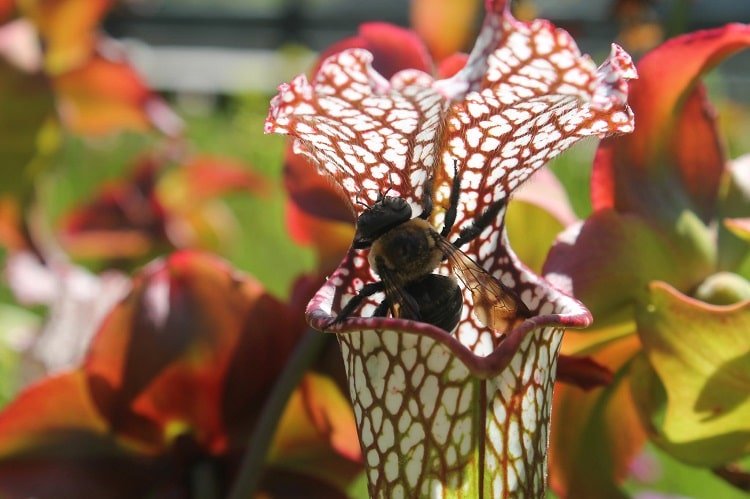Our world is full of plants of all kinds. Some of them produce fruits and vegetables that feed us, while others have beautiful blooms and turn our gardens into wonderlands. However, there are many other interesting blooms and growths we don’t usually see growing near us. Here is a list of strange plants to present to your children to teach them about plant diversity.
Where Do You See Strange Plants?
Kids are usually familiar with most plants growing in our backyards. If you spend some time taking care of your garden, then your kids probably know which plants produce fruits that are edible, which ones you keep for their blooms, or which ones have a protective effect. However, not all plants are so friendly with humans.
Since they often turn into dinner for animals or sometimes for bigger plants, they need to take some measures to protect themselves from predators. These mechanisms can be dangerous, as the plants become poisonous or grow spines that can hurt you if you touch them. In other cases, they are the predators. Some of these strange plants feed on small insects they lure into their traps.
If your kids like nature, they’ll be excited to find out about these strange plants. They will impress them with their odd appearance and habits, and the diversity of places where you can find them. Unfortunately, many strange plants are not native to North America, so your kids can see them only in pictures. Even so, this is an interesting lesson to teach them.
Strange Plants That Will Amaze Your Kids
Here is a list of plants with some of the strangest appearances. While some of them look fascinating, others are terrifying. Others become interesting through what they do and how they get rid of predators. No matter what plants you will show to your kids, they will be fascinated by them.
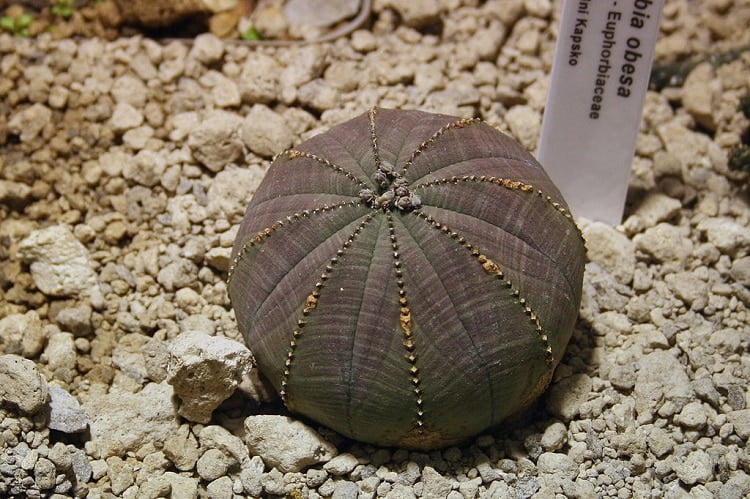
1. Baseball Plant
This circular plant, by its scientific name Euphorbia obesa, grows naturally in South Africa. Given its unique resemblance to a baseball, people have harvested it excessively, permanently damaging the population. This convinced the wildlife authorities to do something about it. Now, both South African and international regulations protect the baseball plant, so damaging it is illegal.
Fortunately, the plant is not endangered. Indeed, it has remained quite rare in its natural habitat, but this intense ‘poaching’ allowed botanical gardens to cultivate it. They also allow some specimens to be sold, as plant collectors are still fascinated by this strange plant. This way, by selling the plants bred in captivity, they save those specimens that are still living in the wild.
Although they look so appealing, baseball plants are not so friendly. They have developed a mechanism of protection, as their outer shell is pretty toxic. If you touch it, you might develop skin rashes or other similar problems.

2. Welwitschia Mirabilis
This is the most resistant plant in the world, living in the desert of Namibia. It is truly a remarkable plant, as it can live up to 1500 years, and can survive even the harshest conditions. For instance, it can live five years without rain. However, the interesting things about it don’t stop here. Its appearance is unusual as well, as it’s made up of only two leaves and a stem.
These two leaves keep growing around the big stem until they reach incredible sizes and, in the end, turn into an odd-looking mane. As the leaves grow, this stem keeps getting thicker instead of getting taller so, after many years, it might get several meters wide.
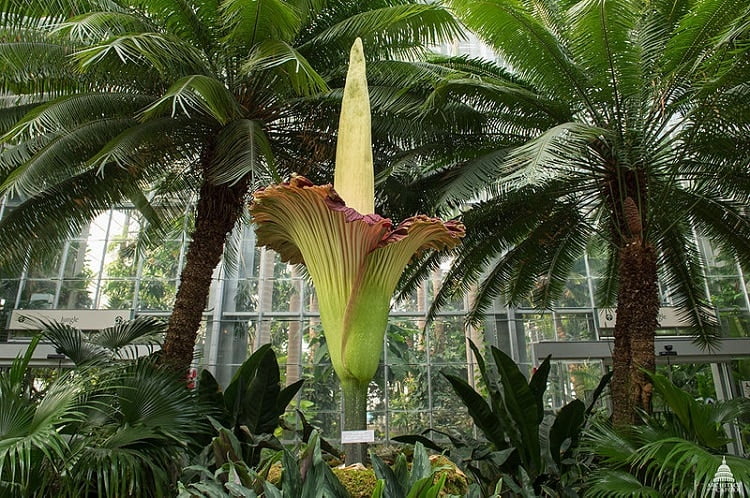
3. Corpse Flower
This plant native to Sumatra bears this name due to its unusual way to keep predators away. It leaves off a pungent decomposing smell which prevents animals from eating it. However, its flower is the most recognizable. It can reach 8.2 feet in height and 200 pounds in weight.
The corpse flower is made up of several smaller male and female flowers. In fact, these tiny flowers contribute to the cadaverous smell. They produce some oils that heat up within the large body of the plant. As they start boiling, they produce this smell. Although it successfully keeps predators away, the plant is still very rare. Therefore, it’s protected by law.

4. Rafflesia
This flower is pretty similar to the corpse flower, as it’s another plant that produces a pungent smell. Also, it represents the biggest individual flower in the world. It looks pretty odd, as it seems to be self-standing. Apart from the huge flower, it seems to have no leaves, stems, or roots. This led many people to believe it must have more in common with fungi.
Rafflesia also lives in the tropical rainforests of Sumatra. Unlike the corpse plant, which has both male and female flowers, rafflesia is unisexual. It contains both reproduction systems, but they can also multiply by leaving off pieces of tissue as parasites on vines or other plants.
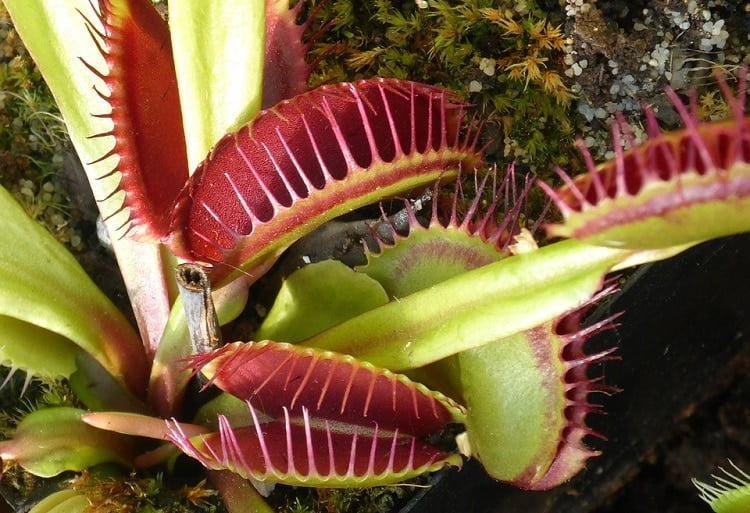
5. Venus Flytrap
This vegetal predator couldn’t miss from any list of strange plants. It’s probably the most popular carnivorous plant, and it also lives in the United States. Its dietary choices are caused by its native location, namely the soils poor in nutrients from North and South Carolina.
The plant requires some nitrogen from time to time, and it can take from small animals and insects. Its recognizable trap has some sensitive hairs on it that sense when the prey has gotten close enough. As soon as these hairs perceive the signal, the trap snaps over the body of the animal. The prey should touch two of the hairs within 20 seconds from each other for the trap to react.
The two halves of the trap contain some finger-like components that intertwine and keep it shut. This mechanism is hard to break so; once the trap closes, the prey can no longer get out. Then, the Venus flytrap starts digesting it, taking it about ten days to finish.

6. Pitcher Plant
This is another carnivorous plant, but its shape is not as recognizable as the one of the Venus flytrap. As its name suggests, it is shaped like a pitcher, colored in a deep red hue. However, since it is significantly bigger, it can kill a larger category of animals.
Pitcher plants are the most interesting of all these strange plants. Their pouch is full of appealing smells that attract the prey. Inside, it has plenty of sticky substances that prevent it from escaping so, once the animal is inside the pitcher, it can no longer get out.
Some of them develop a strong relationship with ants. They cannot digest small animals completely, meaning that their skeleton and other leftovers remain inside the pouch. To avoid their rotting, they have started allowing ants to enter the pouch and clean these leftovers.
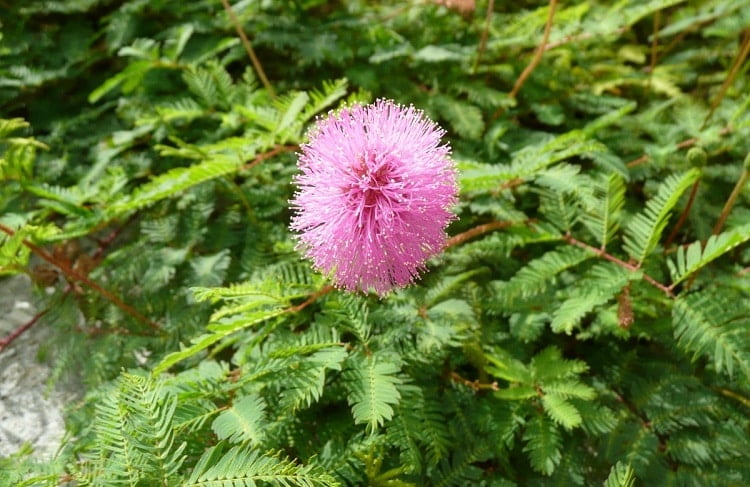
7. Mimosa Pudica
This flower deserves a place on the list of strange plants only for its response to touch. At a first look, it looks like a regular plant, so it’s pretty difficult to observe it. However, once you touch it, its leaves quickly fold back and run away from your touch. It takes them a few minutes until they return to their initial shape.
This extremely sensitive plant is native to South and Central America, but it easily expanded as a weed in other regions as well. Therefore, you never know where you might find it. Some people even started growing it as a decorative plant.
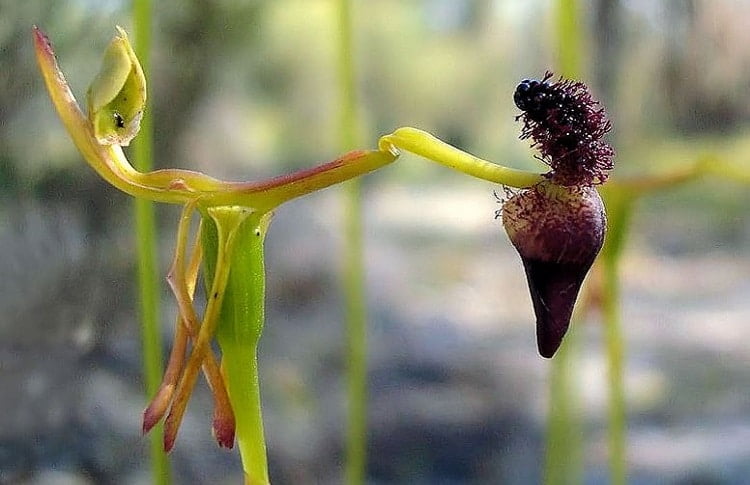
8. Hammer Orchid
Another entry on the strange plants list is this unusual flower from Australia, which has an interesting system of pollination. A part of the plant looks just like a female thynnid wasp, which is unable to fly. This wasp usually climbs on plants and attracts males. Therefore, the sneaky hammer orchid has this part that fools male wasps to approach it.
If a male wasp is tricked to approach the hammer orchid, its fake wasp part will fill the male with pollen. However, there’s one more step to be completed before the pollination is over. This same male should be fooled again, and mistake another hammer orchid for a female wasp. This way, it will bring the pollen of a flower to another flower.
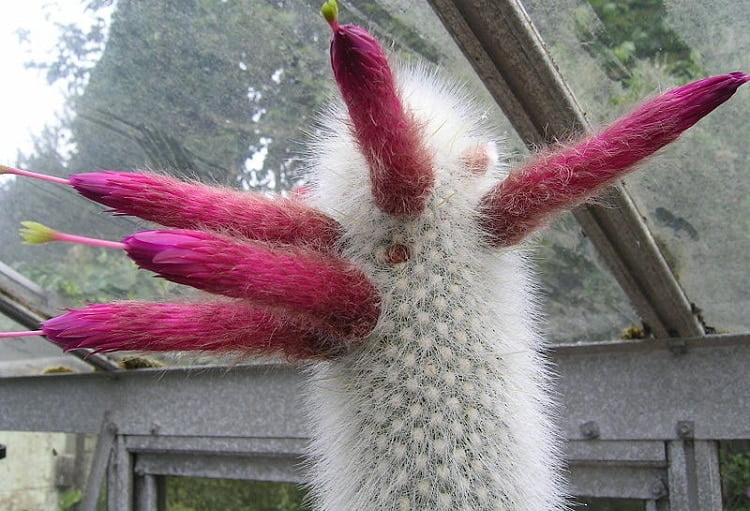
9. Silver Torch Cactus
We end the story of strange plants with a cactus with some unusual blooms. At first, the cactus is full of thin needles with a silvery aspect. These needles look a bit like a fur coat, but things get better once the cactus starts blooming. Its bright red flowers grow horizontally, making for a truly interesting appearance.
This cactus is also unique because it grows in colder regions. You can find it in the mountains of Argentina and Bolivia, and it can even take negative temperatures.
Summing Up
Teaching your kids about these strange plants will help them discover the unusual world of flowers and plants. They can find out that nature is interesting, too, and might make them want to know more about its mysteries. Some details might sound terrifying, but it’s important to know what some plants do to survive in tough conditions.
Image source: Flickr





